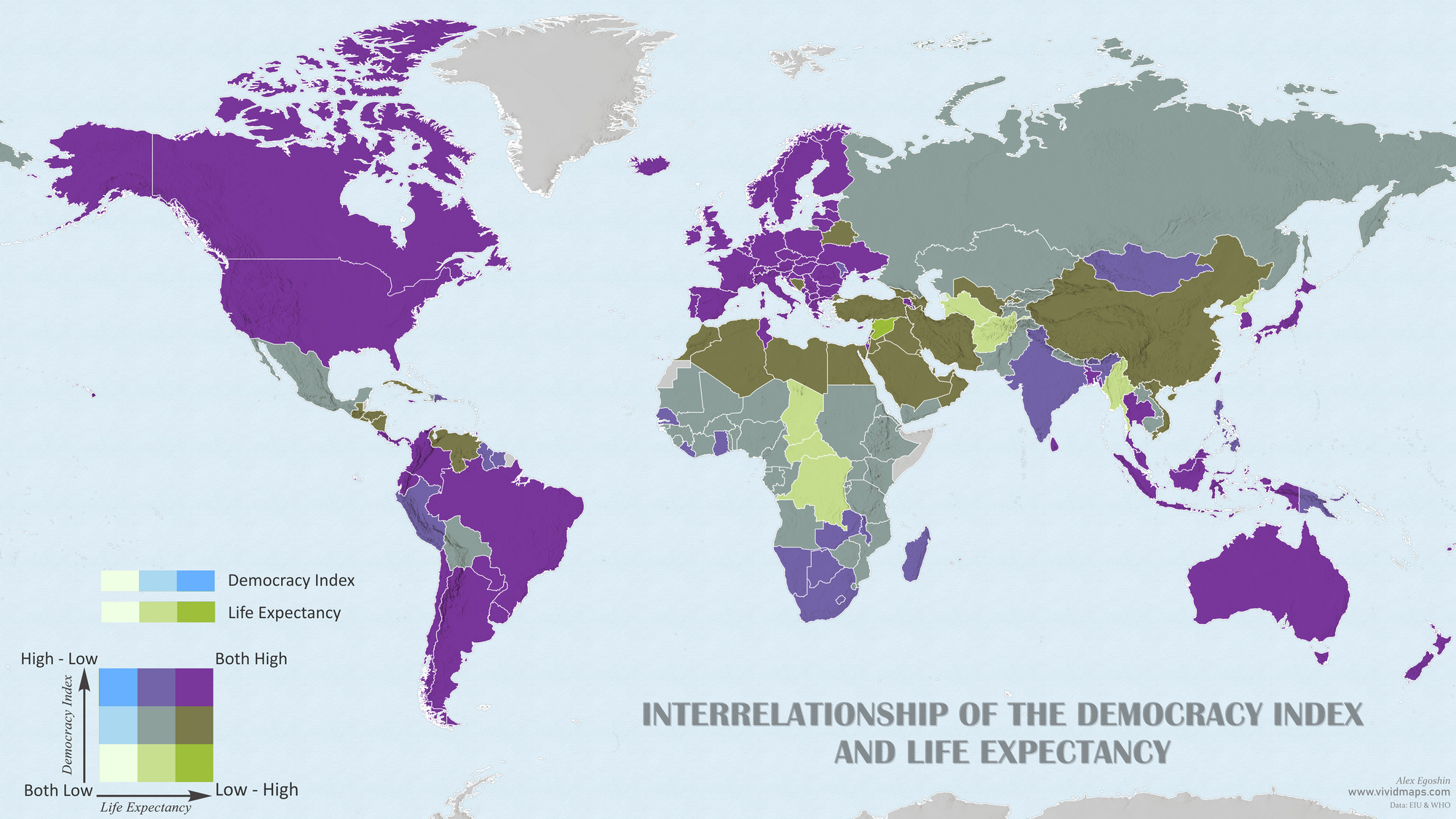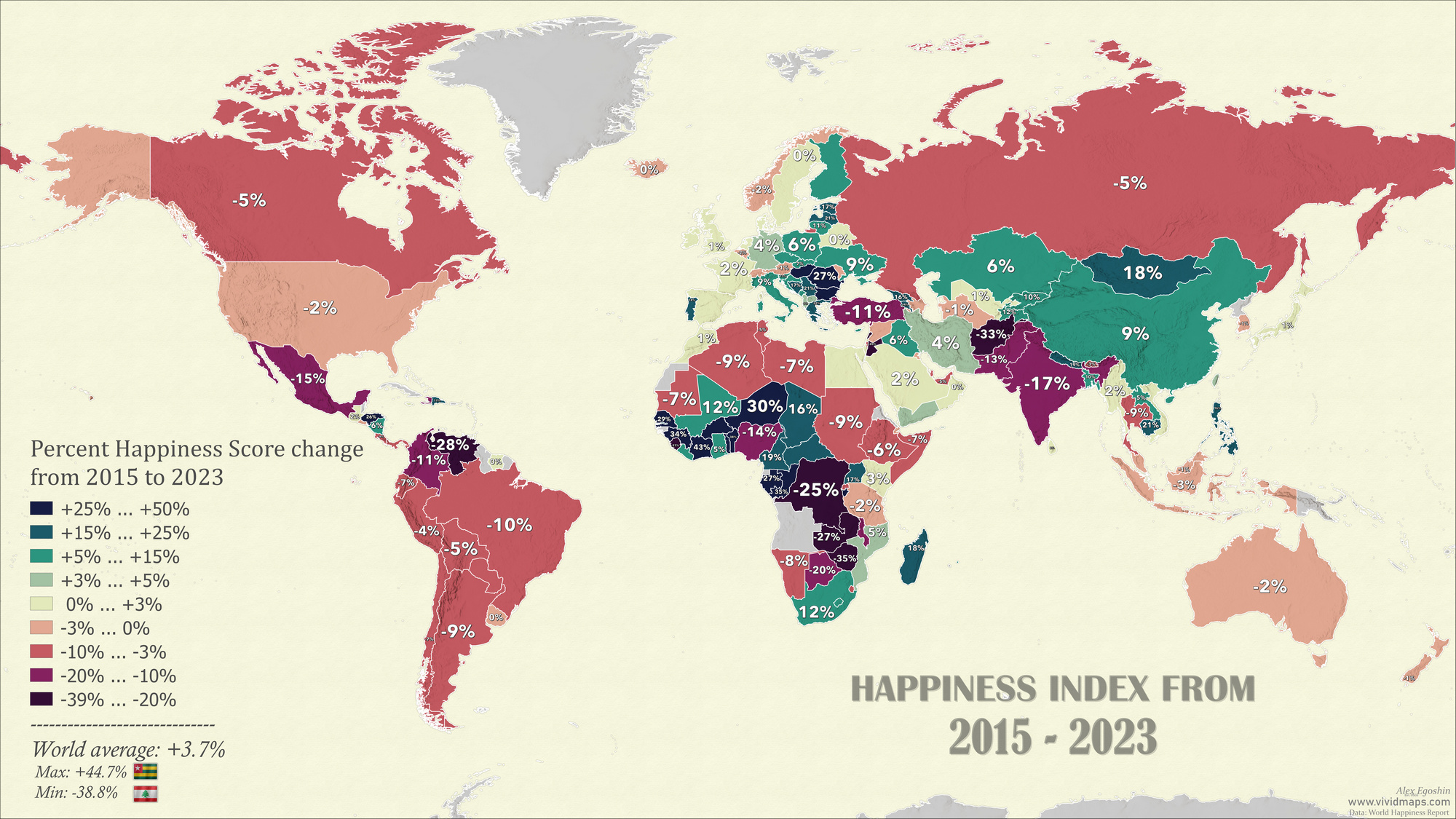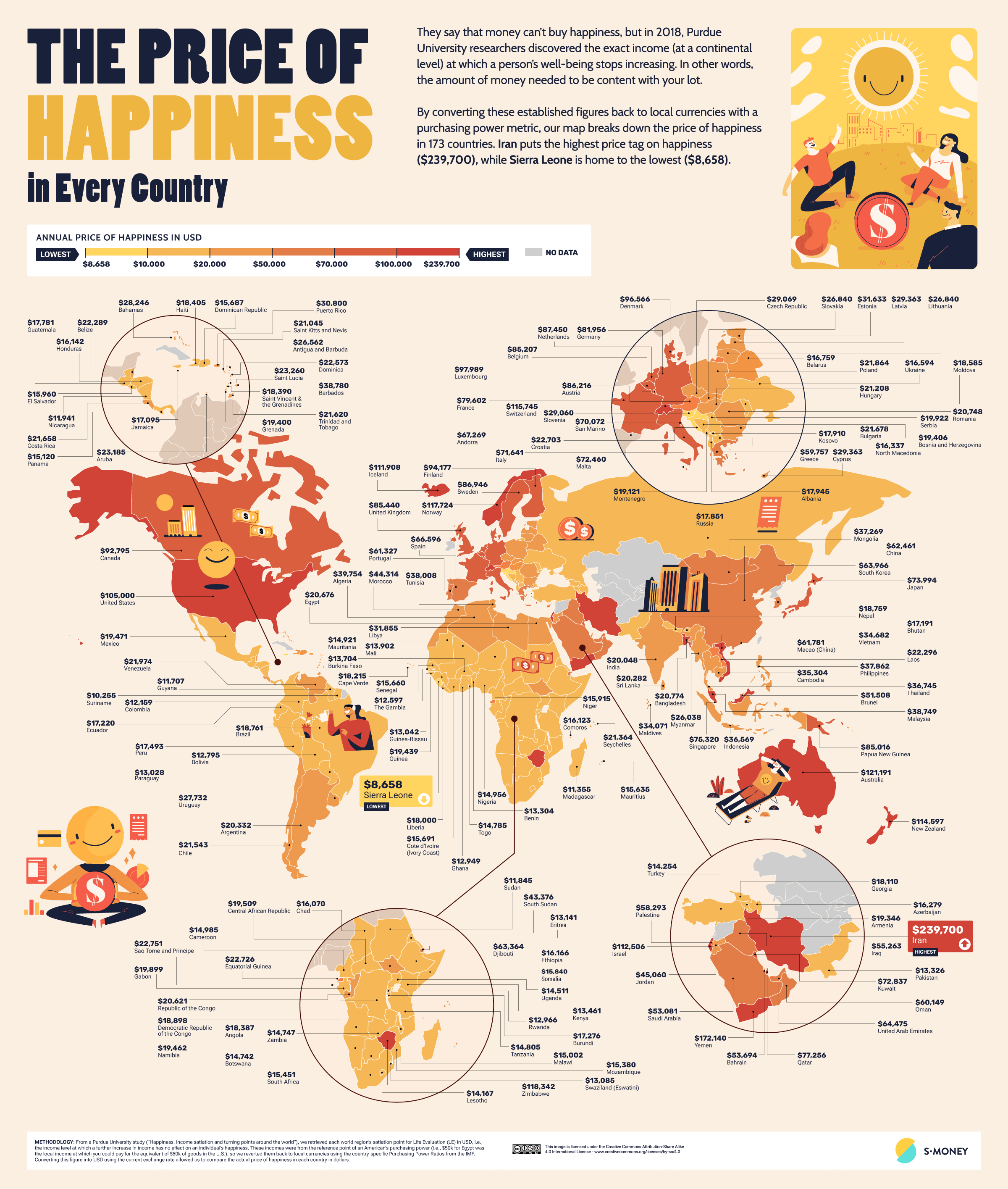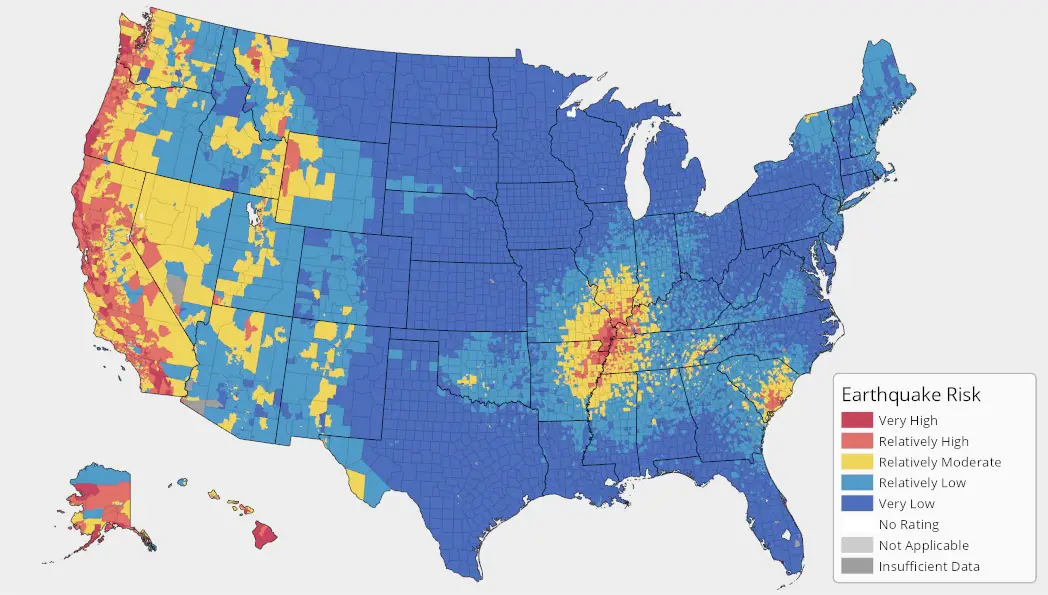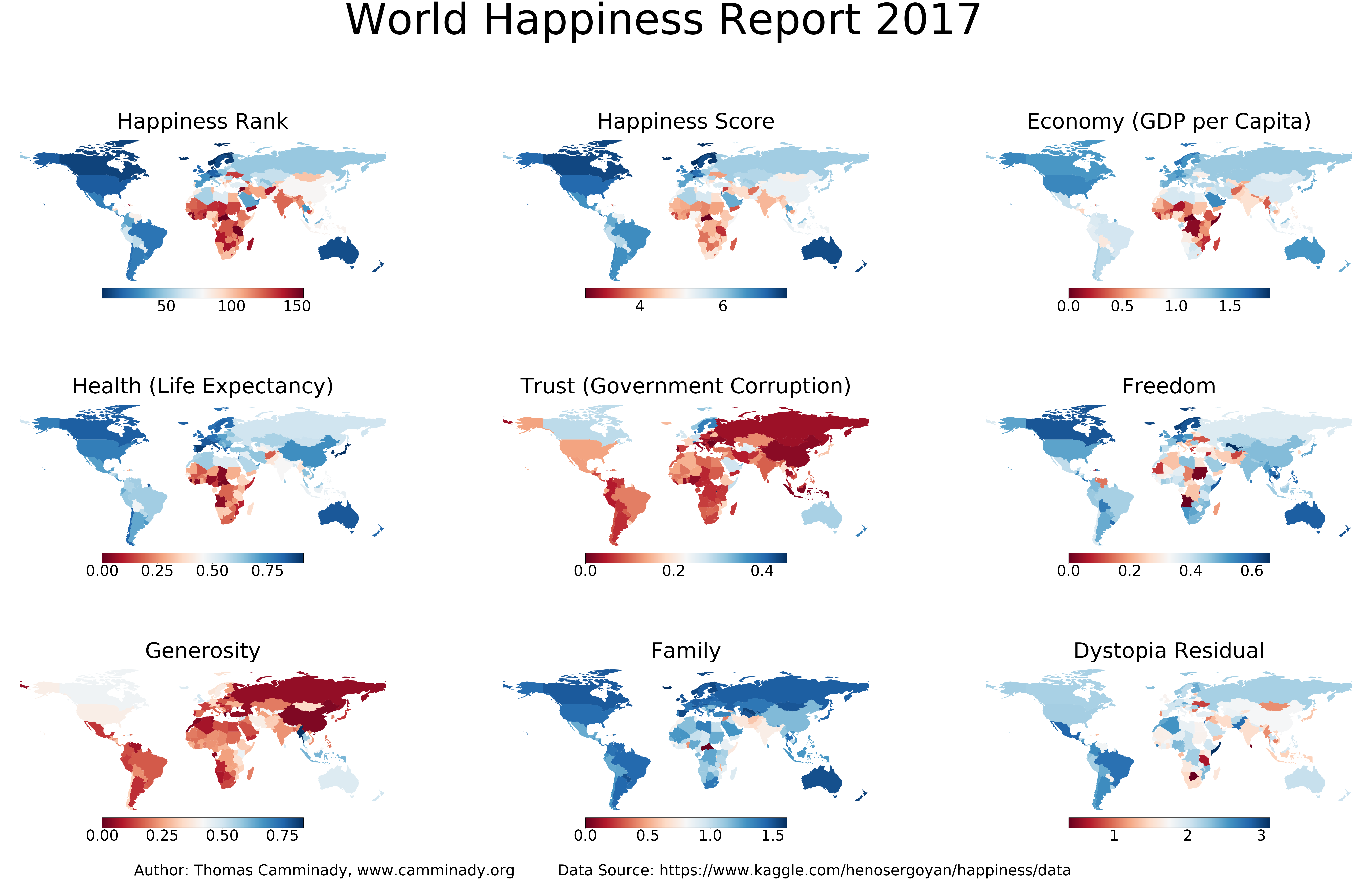The most and least happy countries around the world (2019)
The Happiness Index is based on variables: GDP per capita, social support, healthy life, expectancy, freedom, generosity, and absence of corruption.
The map below shows the most and least happy nation in the world. Finland is the happiest country in the world, and South Sudan is the most unhappy.
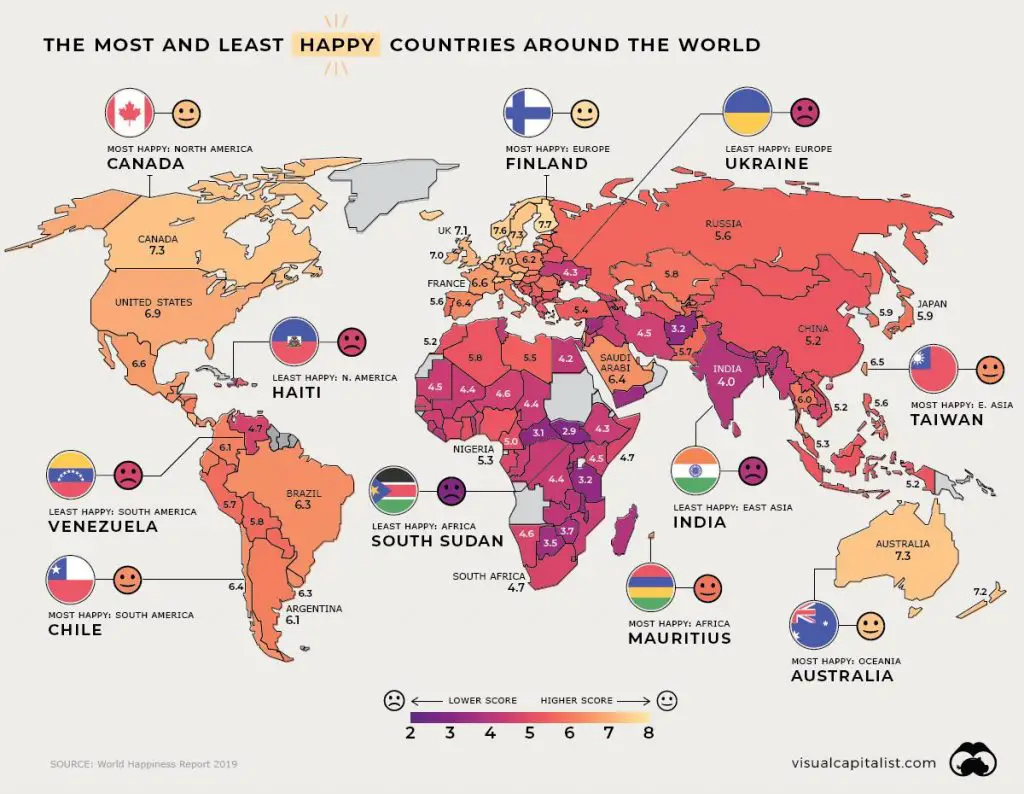
Despite post-recession recovery and lower crime rates, happiness in the U.S. has hit its low point this century. Haiti is least happy country in the region. Haiti is still striving for improvement in its quality of life, after a slow recovery from the devasting earthquake in 2010.

Chile’s happiness can be linked to its fast-growing economy, enabling the country to reduce its population poverty from 26 percent in 2000 to 7.9 percent in 2015. Venezuela is the least happy country in the region. Drawn-out economic turmoil and political crisis land Venezuela on the bottom of two lists.
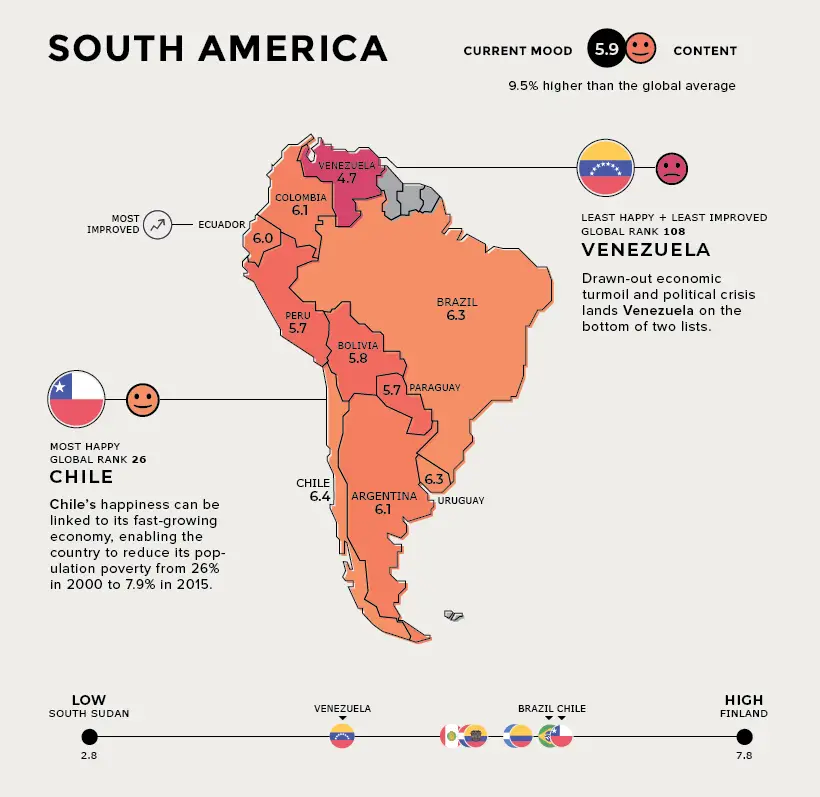
Finland the happiest country in Europe. For the second year in a row, Finland holds the top spot in the rankings, cemented by an overall sense of personal safety. Ukraine fares worst in the region, partially owing to ongoing armed conflict in Donbas since 2014.
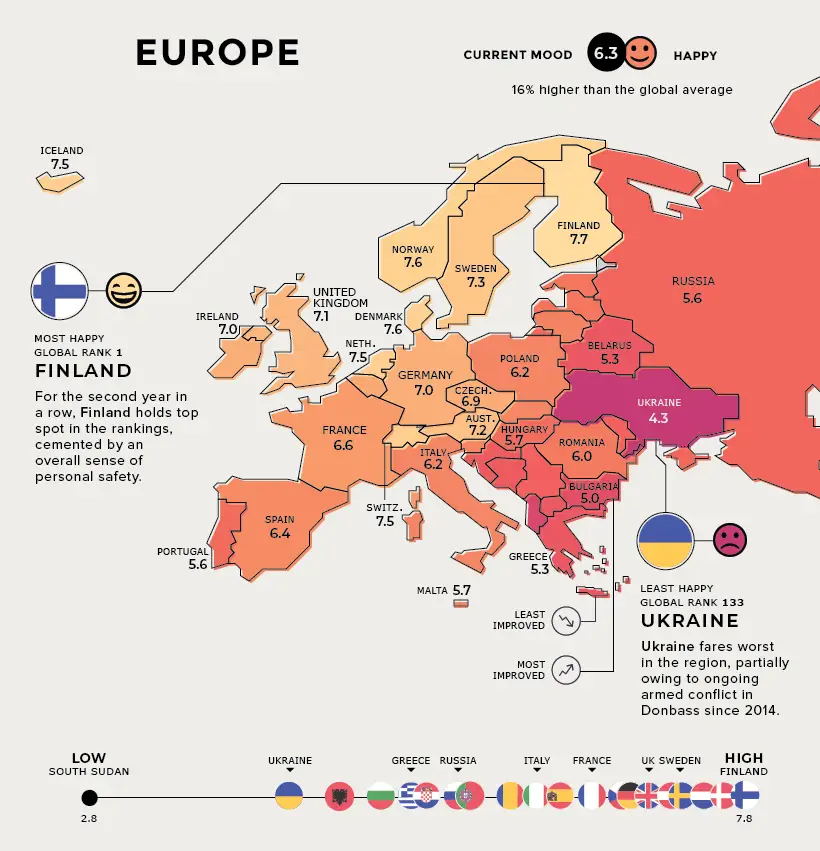
Israel is the most country in the Middle East. A strong GDP per capita and social support help Israel score much higher than the rest of the region. Uzbekistan exhibits the most promise of improvement, including growing freedom of speech and press.

India has faced a steady declining trend in happiness, likely due to the pressures of a rising population. Taiwan besting other East Asian rivals. Taiwan moved up seven rankings to its best performance to date.
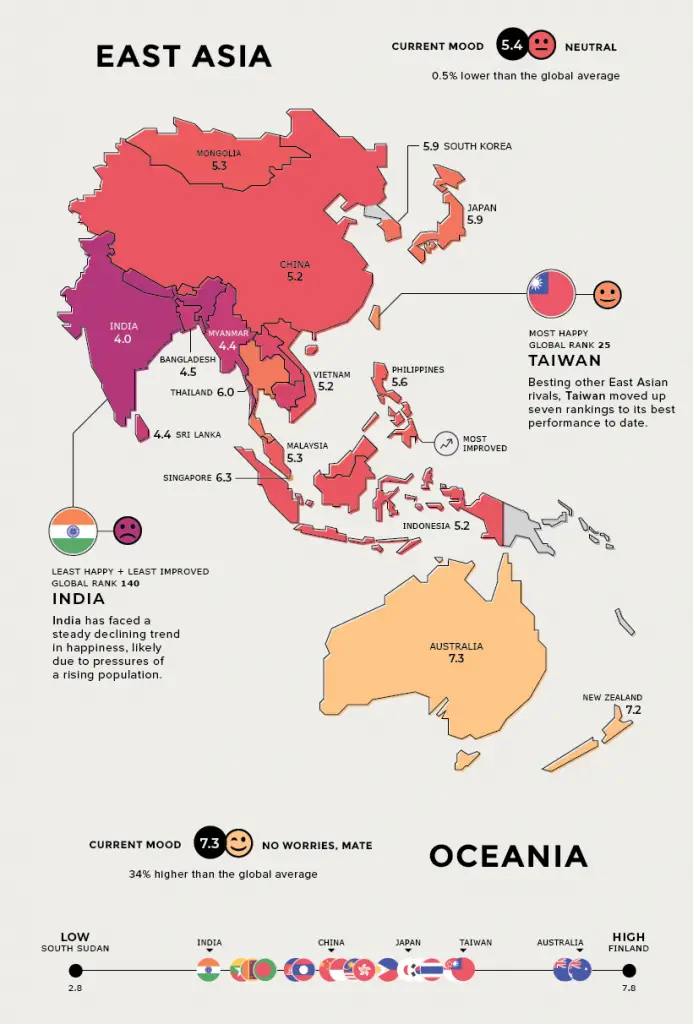
Benin has leaped an impressive 50 places in the 10-year change to become #1 in improvement. The humble island of Mauritius takes the lead in Africa, strengthened by citizens’ low perception of corruption.
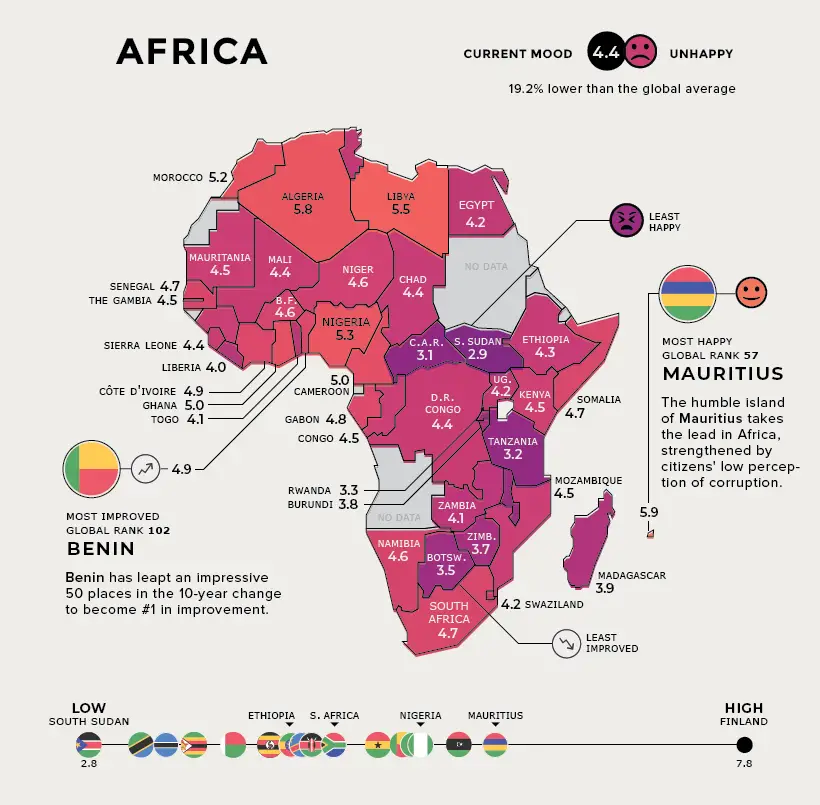
The annual data for Finland have continued their modest but steady upward trend since 2014, so that dropping 2015 and adding 2018 boosts the average score, thereby putting Finland significantly ahead of other countries in the top ten. Denmark and Norway have also increased their average scores, but Denmark by more than Norway, so Denmark is now in second place and Norway third. There are no 2018 survey results available for Iceland, and their score and ranking remain the same, in 4th place. The Netherlands has slipped into 5th place, dropping Switzerland to 6th. The next three places contain the same three countries as last year, with Sweden’s increasing scores raising it to 7th, with New Zealand remaining 8th and Canada now in 9th. The final position in the top ten goes to Austria, rising from 12th to 10th, with Australia dropping to 11th, followed by Costa Rica in 12th, and Israel in the 13th. There are further changes in the rest of the top 20, with Luxembourg rising to 14th and the United Kingdom to 15th, Ireland and Germany in 16th and 17th, and Belgium and the United States in 18th and 19th. The Czech Republic rounds out the top 20 by switching positions with the United Arab Emirates. Both countries posted rising averages, with the Czech score rising more. Throughout the top 20 positions,
and indeed at most places in the rankings, even the three-year average scores are close enough to one another that significant differences are found only between country pairs that are several positions apart in the rankings. This can be seen by inspecting the whisker lines showing the 95% confidence intervals for the average scores.
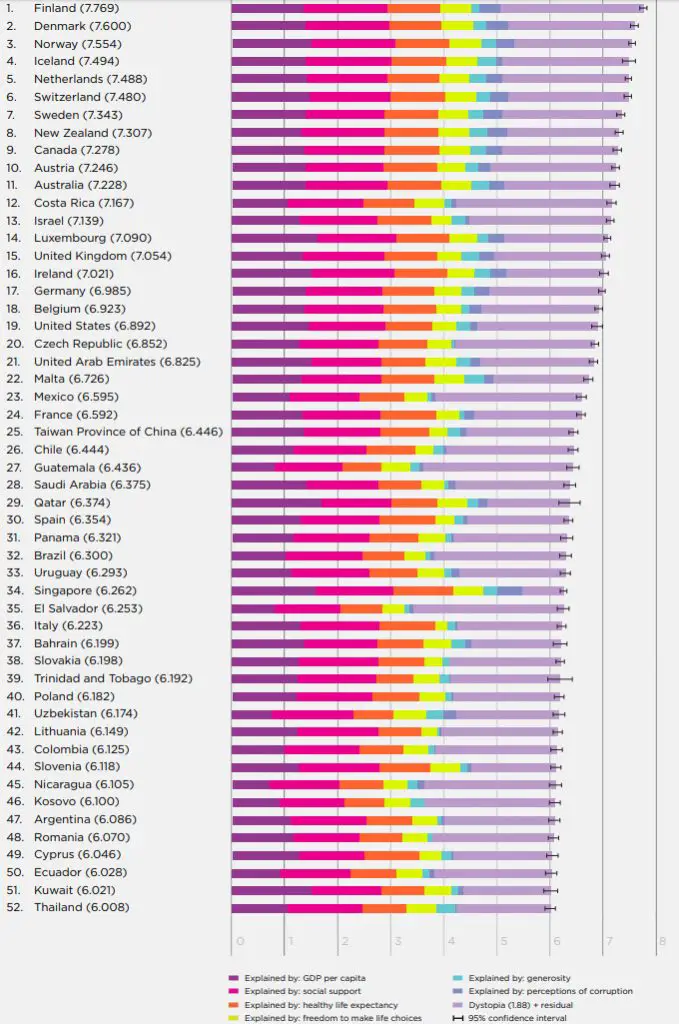
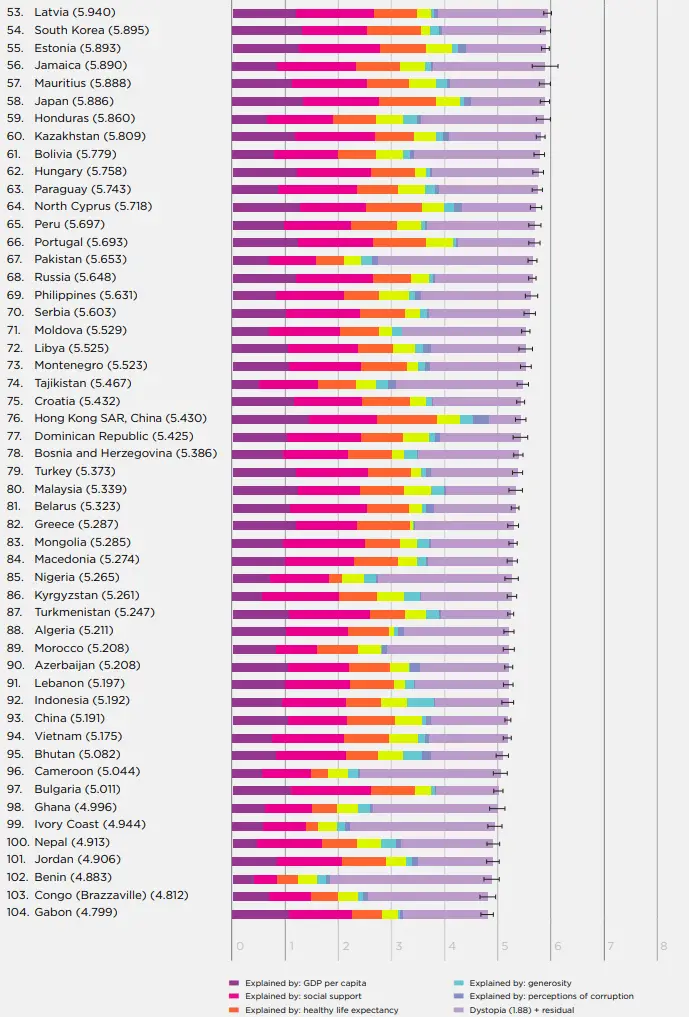
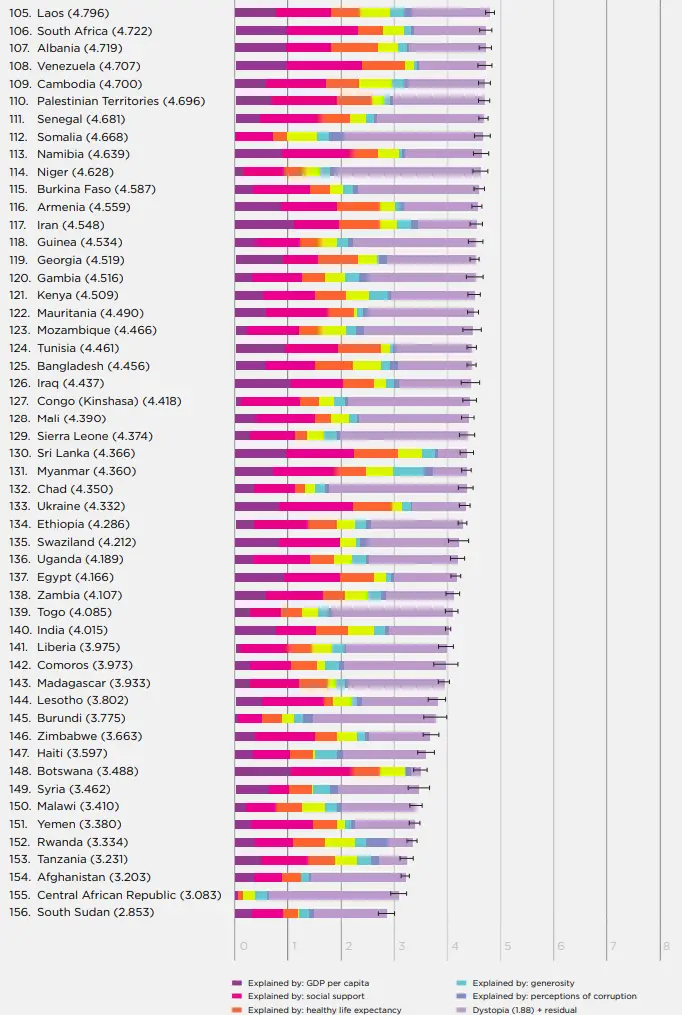
There remains a large gap between the top and bottom countries. The top ten countries are less tightly grouped than last year. The national life evaluation scores now have a gap of 0.28 between the 1st and 5th position, and another 0.24 between 5th and 10th positions, a more spread-out situation than last year. Thus there is now a gap of about 0.5 points between the first and 10th positions. There is a bigger range of scores covered by the bottom 10 countries. Within this group, average scores differ by almost three-quarters of a point, more than one-fifth of the average national score in the group.

